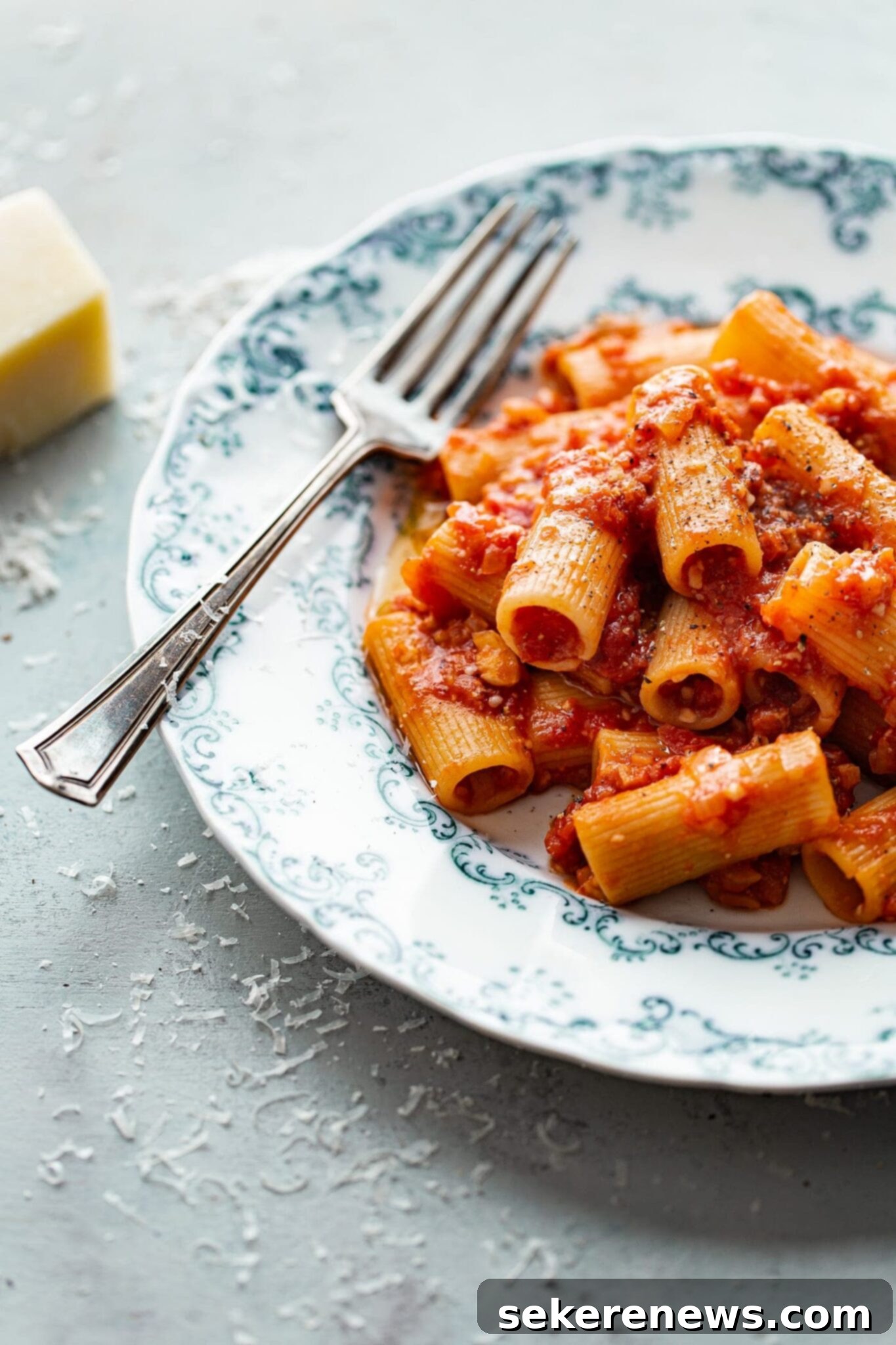Authentic Pasta Amatriciana: A Spicy, Hearty Italian Classic for Any Night
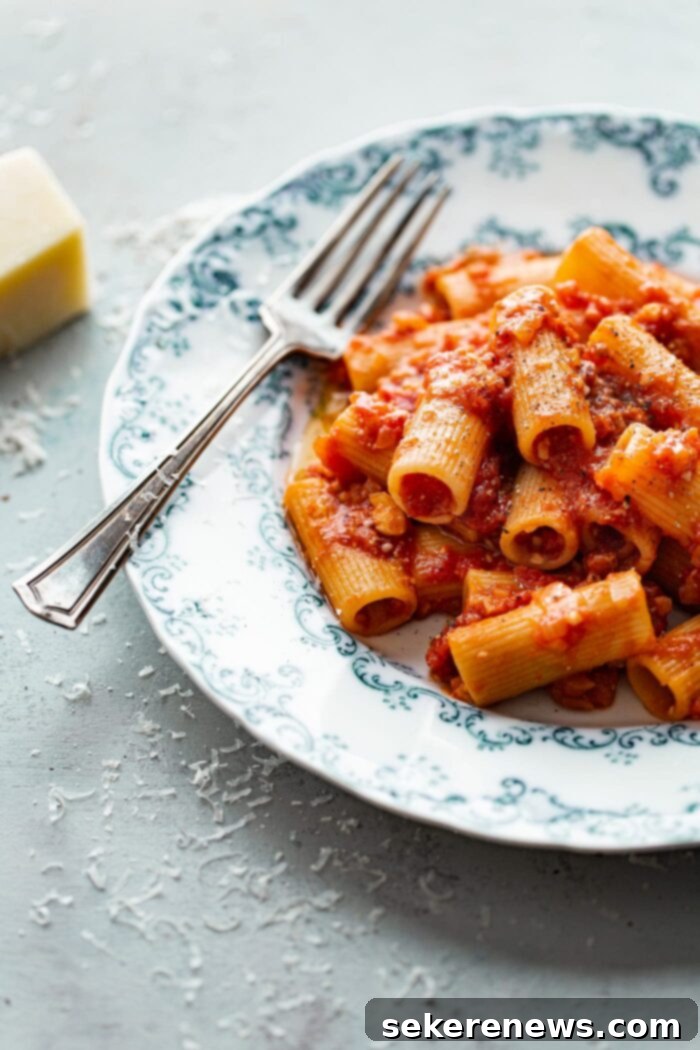
Dive into the rich flavors of Italy with this incredible Pasta Amatriciana recipe. While deeply rooted in traditional Italian cuisine, particularly from Amatrice, Italy, this recipe presents my adaptation of the classic sauce, often known as all’amatriciana or simply matriciana. It’s a dish that masterfully balances savory, spicy, and tangy notes, creating a truly unforgettable pasta experience.
The history of Amatriciana is as rich and complex as its flavor, with roots tracing back to the 18th century. Traditionally, it’s a robust sauce built upon a foundation of cured pork (specifically guanciale), quality canned tomatoes, a touch of heat from red pepper flakes, and the salty finish of Pecorino Romano cheese. This version streamlines the process and uses more readily available ingredients like pancetta, making it perfect for the home cook without compromising on authentic taste.
If you’re a fan of pasta dishes that are hearty, bursting with flavor, and offer a pleasant kick of spice, then this recipe is about to become your new favorite. The tomato-based sauce is incredibly satisfying and delivers a taste akin to what you’d savor at a beloved Italian trattoria. And the best part? This entire culinary delight can be whipped up in less than 30 minutes, making it an ideal choice for a quick yet impressive weeknight dinner.
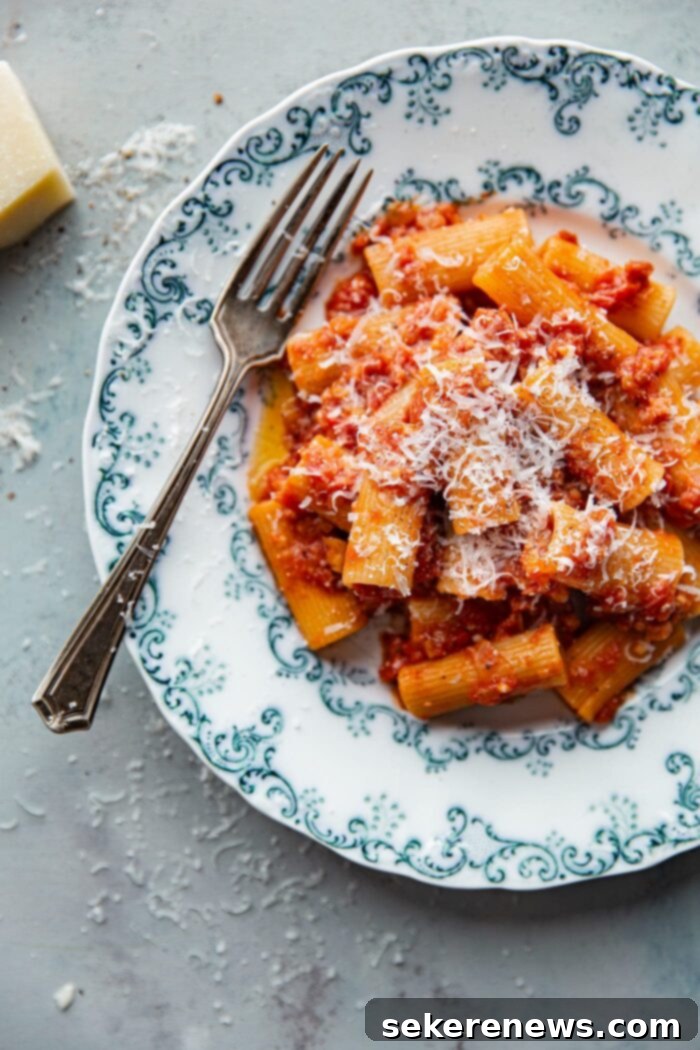
Why You’ll Love This Quick & Flavorful Pasta Dish
Pasta Amatriciana holds a special place in my heart, especially as a go-to for delicious and speedy weeknight meals. Its appeal lies in its simplicity and the depth of flavor it achieves with minimal effort and common ingredients. Here’s why this dish will quickly become a staple in your kitchen:
- Effortless & Fast: Forget complicated recipes! This dish comes together in under 25 minutes, making it perfect for busy evenings when you crave a homemade, gourmet meal without the fuss. It’s significantly faster than many other classic Italian sauces.
- Pantry Staples: You likely have most of these ingredients on hand already. High-quality canned tomatoes, cured pork, and a block of Pecorino Romano are all it takes to build a deeply satisfying sauce.
- Restaurant-Quality Taste at Home: The combination of crispy pork, aromatic garlic and onion, rich tomato, and spicy red pepper flakes creates a complex flavor profile that rivals dishes from your favorite Italian restaurant. Impress your family and friends with this seemingly elaborate, yet deceptively simple, meal.
- Hearty & Satisfying: Amatriciana is a wonderfully robust sauce that clings beautifully to pasta, offering a comforting and fulfilling meal. It’s perfect for colder evenings or whenever you need a substantial and warming dish.
- Customizable Spice Level: While it packs a pleasant punch, the heat can be easily adjusted to your preference, ensuring everyone at the table enjoys it.
- Versatile & Adaptable: Though specific ingredients are key, the core recipe can be adapted slightly (like the choice of cured pork or pasta shape) to suit what you have available, making it incredibly flexible.

Essential Ingredients for the Perfect Pasta Amatriciana
The magic of Amatriciana lies in the quality and balance of its relatively few ingredients. Each component plays a crucial role in building the sauce’s characteristic flavor. Here’s a detailed look at what you’ll need and why each element is important:
- EXTRA VIRGIN OLIVE OIL: As a fundamental fat in Italian cooking, a good quality extra virgin olive oil provides a fruity, peppery base and helps render the pancetta while also sautéing the aromatics. Choose a robust, flavorful olive oil for the best results.
- PANCETTA: While the true traditional Amatriciana calls for guanciale (cured pork jowl), pancetta (Italian cured pork belly, often referred to as Italian bacon) is an exceptional and much easier-to-find substitute. I prefer dicing the pancetta into small pieces, which ensures even crispiness and distribution throughout the sauce. However, feel free to adjust the size to your liking – larger pieces offer more chewy texture, while smaller dice almost melt into the sauce, leaving behind rich flavor. The rendered fat from the pancetta is absolutely essential for flavoring the entire dish.
- YELLOW ONION + GARLIC: Following the style of many Roman Amatriciana preparations, this recipe incorporates both finely diced yellow onion and thinly sliced garlic. The onion should be diced very finely so that it practically dissolves into the sauce, contributing sweetness and depth without being overtly chunky. The garlic adds an indispensable aromatic layer.
- DRIED RED PEPPER FLAKES: This recipe recommends 1 teaspoon of dried red pepper flakes, which provides a notable but balanced level of heat. It offers a pleasant warmth without overwhelming the other flavors. If your palate is sensitive to spice, start with 1/2 teaspoon or even less, and adjust according to your personal preference during the simmering process.
- TOMATO PASTE: A crucial ingredient for boosting the umami and concentrated tomato flavor. Cooking the tomato paste briefly with the aromatics helps to deepen its sweetness and creates a richer, more complex base for the sauce.
- CANNED ITALIAN TOMATOES: You’ll need one (28-ounce) can of high-quality crushed Italian tomatoes. If you can only find whole Italian peeled tomatoes, simply process them in a food processor or crush them by hand until mostly smooth. For the best flavor, seek out San Marzano tomatoes, known for their sweetness and low acidity. My preferred canned tomato brands, highly recommended for their consistent quality, are Bianca DiNapoli and Cento.
- PECORINO CHEESE: A non-negotiable, key ingredient that defines Amatriciana. Pecorino Romano is a hard, salty, and sharp Italian sheep’s milk cheese. Its pungent, tangy flavor is absolutely essential to the authenticity and character of this dish. Do not substitute it with Parmesan if you want the true Amatriciana experience. Grate a generous amount into the sauce and ensure you have extra for serving!
- KOSHER SALT & FRESHLY GROUND BLACK PEPPER: Basic seasonings to bring all the flavors into harmony. Always taste and adjust as you go.
- PASTA: The vehicle for the delicious sauce! While traditional recipes often call for bucatini or spaghetti, rigatoni is an excellent choice. (More on pasta choice below.)
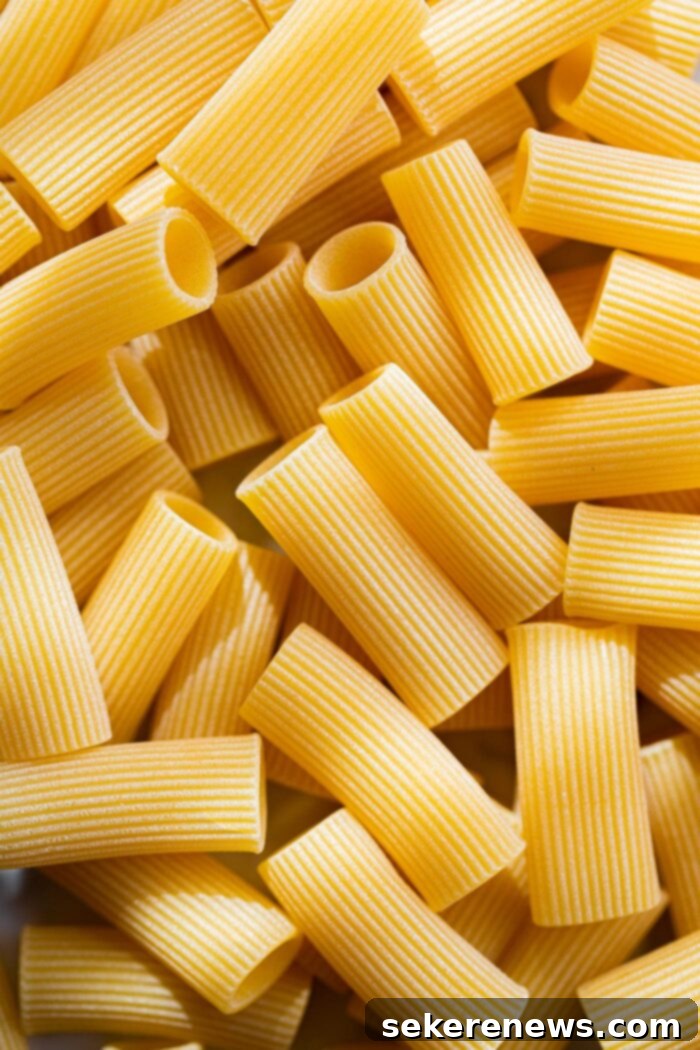
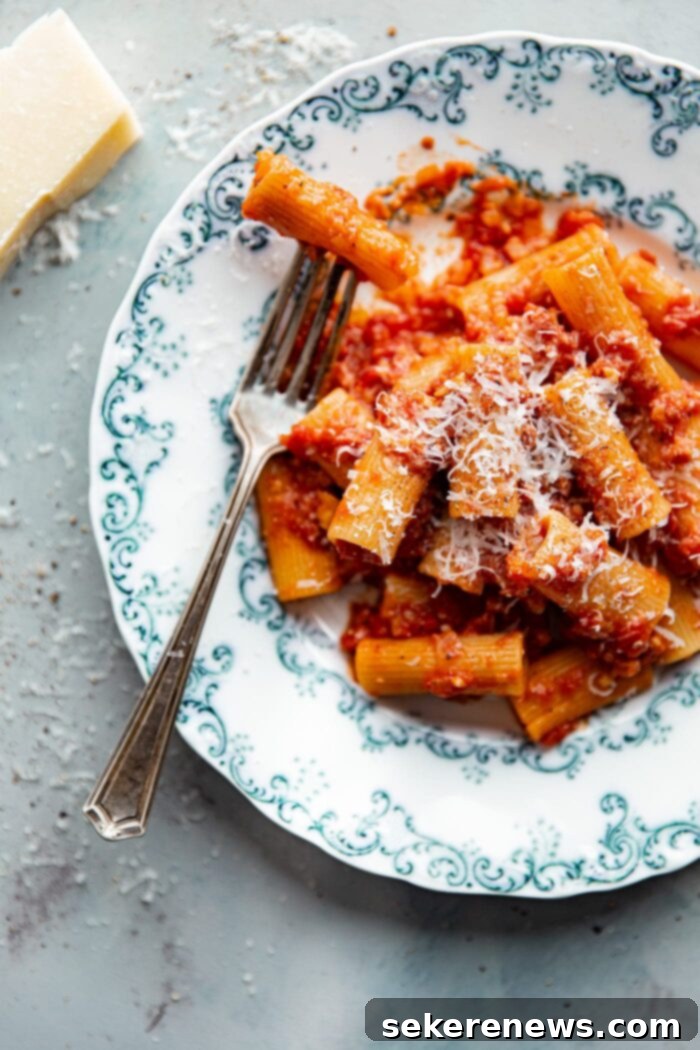
Choosing the Perfect Pasta for Amatriciana
The type of pasta you choose can significantly impact your Amatriciana experience. While the sauce is undeniably the star, the right pasta acts as the perfect canvas, ensuring every bite is a harmonious blend of flavors and textures.
Traditionally, bucatini or spaghetti are the go-to choices for Amatriciana. Bucatini, with its hollow center, is particularly excellent as it allows the rich sauce to seep inside, providing bursts of flavor with each bite. Spaghetti, a classic long pasta, also works wonderfully, allowing the sauce to coat each strand evenly.
However, rigatoni has emerged as a personal favorite and a fantastic alternative. Its wide, ridged tubes and large surface area are ideal for capturing and clinging to the chunky, textured Amatriciana sauce. The deep ridges ensure that every nook and cranny is filled with deliciousness, making for an incredibly satisfying mouthfeel.
It’s important to note that, unlike dishes such as this delightful Creamy Leek Pancetta Pappardelle which benefits greatly from fresh egg pasta, Pasta Amatriciana truly shines when prepared with dried, preferably bronze die-cut, pasta. Bronze die-cut pasta has a rougher, more porous surface compared to smooth, Teflon-extruded pasta. This texture allows the sauce to adhere much better, preventing it from slipping off and ensuring that each piece of pasta is thoroughly coated in the savory Amatriciana goodness. The robust nature of dried pasta also holds up well to the hearty sauce, maintaining an ideal al dente bite.
How to Master Amatriciana Sauce: A Step-by-Step Guide
Creating an authentic and incredibly flavorful Amatriciana sauce is simpler than you might think. Follow these steps for a perfect dish every time:
- Heat 1 tablespoon of extra virgin olive oil in a large (12-inch) skillet over medium heat. Add the diced pancetta and cook, stirring occasionally, until it is beautifully rendered and crispy, which typically takes about 5 to 7 minutes. The goal is to extract as much fat as possible while making the pancetta irresistibly crunchy. Once done, use a slotted spoon to remove the crispy pancetta, transfer it to a small bowl, and set it aside. Leave all that precious rendered fat in the skillet – it’s the foundation of your sauce’s flavor.
- Reduce the heat to medium-low. Add the finely diced onion, dried red pepper flakes, and a generous pinch of salt to the pan with the rendered pancetta fat. Cook, stirring frequently, until the onions become soft, translucent, and just begin to take on a light golden color, about 5 to 7 minutes. This slow sautéing process develops their sweetness. Next, add the thinly sliced garlic and cook for another 1 to 2 minutes, stirring constantly, until it becomes fragrant. Be careful not to burn the garlic, as it can turn bitter.
- Add the tomato paste to the skillet. Cook, stirring continuously for 2-3 minutes, until the tomato paste darkens slightly in color and begins to caramelize on the bottom of the pan. This step is crucial for deepening the tomato flavor and removing any raw taste. Then, pour in the canned crushed tomatoes and return the reserved crispy pancetta to the skillet. Stir well to ensure all ingredients are thoroughly combined. Bring the sauce to a gentle simmer and let it cook for an additional 15 to 20 minutes, allowing the flavors to meld and develop. Taste the sauce and season generously with salt and freshly ground black pepper as needed.
- While the sauce simmers, bring a large pot of salted water to a rolling boil. Add your chosen pasta (rigatoni, bucatini, or spaghetti) and cook until it is just shy of al dente – about 1-2 minutes less than the package instructions. This ensures the pasta finishes cooking in the sauce. Using a spider skimmer or a large slotted spoon, transfer the pasta directly from the boiling water into the skillet with the simmering sauce. The residual starchy pasta water clinging to the pasta will help emulsify the sauce.
- With the pan still over low heat, add the grated Pecorino Romano cheese and a generous splash or two (about 1/4 to 1/2 cup) of the starchy pasta water. Toss vigorously until the sauce evenly coats the pasta, creating a glossy, rich emulsion. The pasta water and cheese work together to create a creamy texture without the need for cream. Serve immediately, topped with additional finely grated Pecorino cheese as desired.
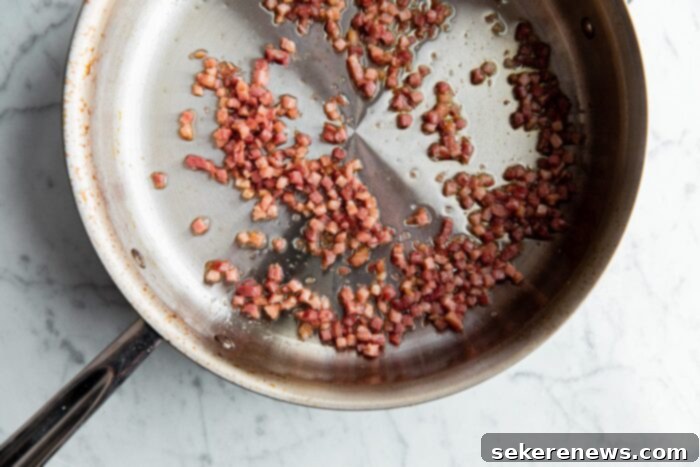
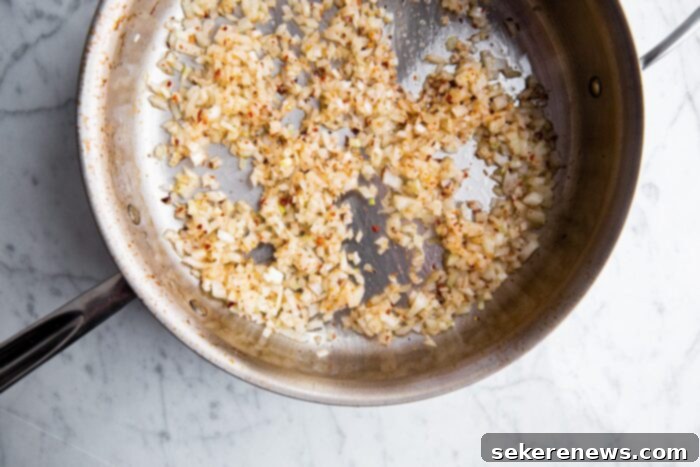
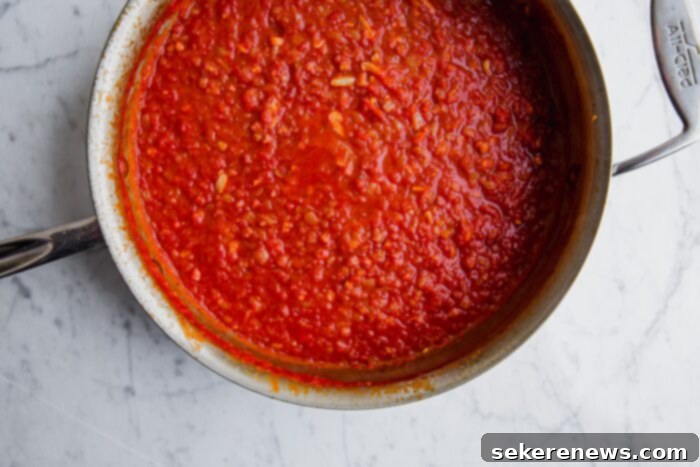
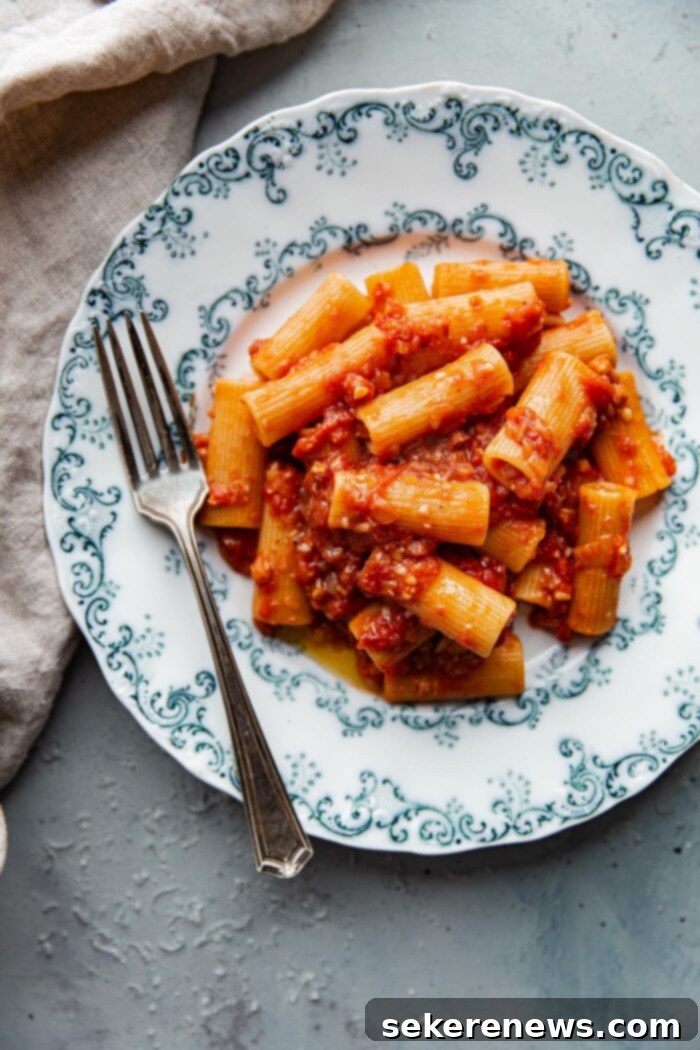
Tips for Amatriciana Perfection
Achieving the perfect Amatriciana is all about technique and using the right ingredients. Here are some extra tips to ensure your dish is nothing short of amazing:
- Don’t Skimp on Quality Ingredients: Since Amatriciana has few ingredients, the quality of each really shines through. Invest in good extra virgin olive oil, high-quality canned San Marzano tomatoes, and authentic Pecorino Romano cheese. These small details make a huge difference.
- Render Pancetta Slowly: Patience is key when cooking the pancetta. Allow it to render slowly over medium heat until all the fat is released and the pancetta is perfectly crispy. This fat is essential for flavoring the entire sauce.
- Mind the Heat: As mentioned, this recipe includes 1 teaspoon of dried red pepper flakes for a decent amount of heat. If you prefer a milder flavor, reduce the quantity to 1/2 teaspoon or even less. You can always add a pinch more at the end if desired.
- Cook Tomato Paste Properly: Don’t rush the step where you cook the tomato paste. Sautéing it until it darkens slightly enhances its sweetness and deepens its flavor, preventing a raw tomato taste in the final sauce.
- “Al Dente” is Your Friend: Always cook your pasta to just under al dente in the boiling water. It will finish cooking in the sauce, absorbing its flavors and achieving that perfect chewiness.
- The Magic of Pasta Water: Never drain all your pasta water! The starchy water is crucial for creating a creamy, emulsified sauce that perfectly coats the pasta. It acts as a binder, helping the cheese and sauce come together seamlessly.
- Freshly Grated Pecorino: Use a microplane or fine grater for your Pecorino Romano. Freshly grated cheese melts better and offers a superior flavor compared to pre-grated varieties.
- Taste and Adjust: Always taste your sauce before mixing in the pasta and again before serving. Adjust salt, pepper, and even red pepper flakes to suit your preference.
Serving Suggestions and Variations
Pasta Amatriciana is a complete and satisfying meal on its own, but it pairs beautifully with a few simple accompaniments. Serve it alongside a fresh, crisp green salad dressed with a simple vinaigrette to cut through the richness of the pasta. A basket of crusty Italian bread is also perfect for soaking up any leftover sauce.
While purists might disagree with variations, here are a few ideas if you want to experiment:
- A Splash of Wine: After cooking the onions and garlic, some chefs like to deglaze the pan with a splash of dry white wine before adding the tomato paste. This can add another layer of complexity.
- Fresh Herbs: While not traditional, a sprinkle of fresh basil or parsley at the very end can add a fresh, aromatic finish.
- Swap the Pork: If guanciale or pancetta are completely unavailable, high-quality, thick-cut bacon can be used in a pinch, though the flavor profile will be slightly different.
We hope you enjoy this delightful journey into Italian culinary tradition. This Amatriciana recipe brings the warmth and spice of a Roman classic straight to your table.
If you enjoy this recipe, you might also like these other delicious pasta dishes:
- Creamy Leek Pancetta Pappardelle
- Roasted Tomato Spaghettini with Garlic Breadcrumbs
- Slow Cooker Bolognese Sauce

Pasta Amatriciana
Pin
Review
SaveSaved!
While bucatini or spaghetti is the traditional pasta choice for amatriciana, rigatoni is a great alternative that has quickly become my personal favorite. The deep ridges and large surface area allow the textured sauce to cling really well.
Ingredients
- 1 tablespoon extra virgin olive oil
- 4-6 ounces pancetta (Italian bacon) cut into a small or medium dice
- 1 small yellow onion (roughly 6-7 ounces) finely diced
- 1 teaspoon crushed red pepper flakes or ½ teaspoon, if you prefer less heat
- kosher salt I recommend Diamond Crystal brand
- 3 garlic cloves finely sliced
- 2 tablespoons tomato paste
- 1 (28-ounce) can crushed San Marzano or Italian plum tomatoes or canned whole Italian tomatoes, processed until mostly smooth
- freshly ground black pepper
- 1 lb (16 ounces) rigatoni, bucatini, or spaghetti see recipe headnote
- 1 ounce finely grated pecorino romano cheese (roughly ¼ cup) plus more for serving
Instructions
-
Heat the olive oil in a large (12-inch) skillet over medium heat. Add the pancetta and cook until rendered and crispy, about 5 to 7 minutes. Using a slotted spoon, transfer the pancetta to a small bowl and set aside, leaving any rendered fat behind in the skillet.

-
Add the onion, red pepper flakes, and a generous pinch of salt to the pan and cook over medium-low heat, stirring often, until the onions are soft, translucent, and just beginning to gain color, about 5 to 7 minutes. Add the garlic and cook until fragrant, stirring constantly, about 1 to 2 minutes.

-
Add the tomato paste and cook, stirring constantly to prevent scorching, until the tomato paste has started to cook slightly and darken in color. Add the canned tomatoes and reserved crispy pancetta back into the skillet and stir the sauce until all of the ingredients are incorporated evenly. Bring the sauce to a simmer and cook for an additional 15 to 20 minutes, seasoning to taste with salt and black pepper.

-
Meanwhile, boil the pasta until just shy of al dente. Using a spider skimmer or large slotted spoon, transfer the pasta directly into the skillet and toss with the sauce. With the pan over low heat, add the pecorino cheese and a generous splash or two of starchy pasta water as needed to help loosen the sauce. Toss until the sauce evenly coats the pasta. Serve with additional finely grated pecorino as desired.
Tips for Success:
- This recipe calls for 1 teaspoon dried red pepper flakes. It packs a decent amount of heat, but doesn’t overpower the palate. Of course, if you are sensitive to spicy foods, decrease the quantity to 1/2 teaspoon or less, and simply adjust to taste.
- For the best flavor, use high-quality San Marzano tomatoes and freshly grated Pecorino Romano cheese.
- Don’t forget to reserve some pasta water! It’s essential for achieving the perfect sauce consistency.
